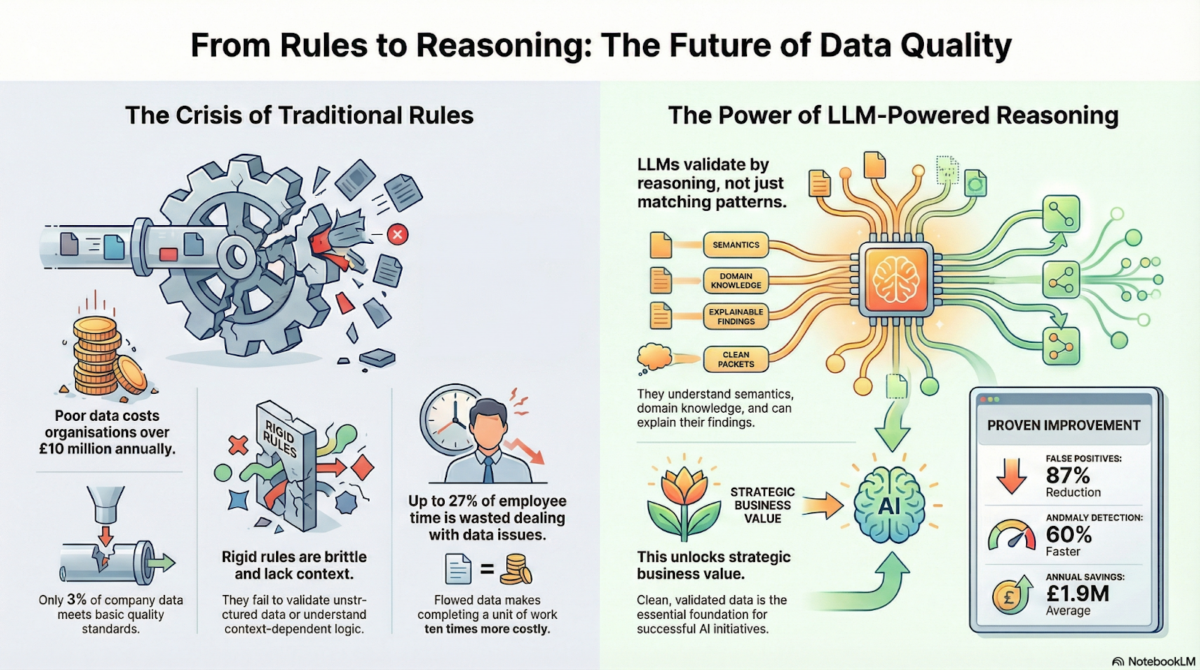A digitalization strategy is a plan for leveraging digital tools and technology to improve how a company operates. It helps businesses stay competitive online by employing technology to speed up activities and save expenses.
This guide explains how companies can make a clear digitalization strategy to capitalize on digital opportunities and stay competitive.
What Is a Digitalisation Strategy?
A digital strategy is a plan that shows how a company can use digital tools and technology to achieve all of its goals. The company improves its operations and interacts better with customers. The plan has everything from websites and social media to mobile apps and data analysis. It’s about selecting the best digital solutions to boost corporate success.
Also Read:- The Benefits of CTO Office Consultancy
Importance of Business Digitalization Strategy
According to predictions, 91% of firms in 2024 are involved in some type of digital activity, with 89% having adopted or planning to implement a digital-first approach. The worldwide digital transformation market will also rise to more than $1 trillion by 2025.
Without a defined digital strategy, companies risk falling behind and missing development opportunities. A well-planned digital strategy guarantees that technology is employed most effectively to achieve company objectives.
What Are the Benefits of a Digital Strategy?
Now that you know what a digital strategy is, let’s learn about its benefits:
1) Better Efficiency
A digital strategy helps companies simplify operations by automating repetitive procedures and minimizing manual labor. This will save time and help employees focus on more valuable tasks. As a result, companies can run more smoothly with fewer errors, eventually generating better output.
2) Cost Savings
Companies that use digital tools can save money on traditional processes like paperwork and physical storage. Digital systems usually need less maintenance and can be updated more readily. This results in long-term savings and more flexible budget allocation to other important areas.
3) Better Customer Engagement
A strong digital presence helps businesses to communicate with customers quickly. This allows them to get valuable feedback and respond rapidly to their requirements. Good customer interaction increases loyalty and can help raise sales by promoting deeper relationships.
4) Data-Driven Decisions
A digital strategy allows organizations to collect and analyze massive amounts of data. This knowledge can help executives make more informed, data-driven decisions. Businesses that understand customer behavior and market trends can change their strategy to remain competitive and more effectively meet client requests.
5) Increased Innovation
Digital technologies promote innovation by making testing new concepts and services easier. Companies can easily test and improve. This ability to innovate quickly lets companies keep ahead of their competition and adapt to changing market conditions.
6) Global Reach
A digital strategy allows businesses to extend beyond local or regional boundaries. Companies can reach clients worldwide via digital channels like e-commerce websites and social media. This improves growth potential and opens up previously inaccessible or pricey markets.
7) Enhanced Collaboration
Teams can interact more effectively using digital technologies like cloud-based platforms and communication apps. Employees can collaborate in real time regardless of location, which facilitates remote work and cross-departmental communication. This helps with faster decision-making and better teamwork, which boosts overall corporate success.
8) Adaptability and Agility
A well-prepared business digitalization strategy can easily adjust to market shifts or industry trends. Digital technologies allow quick updates and revisions, whether you’re introducing a new product or changing a marketing plan. This flexibility helps firms remain agile and better prepared to face unseen problems.
9) Better Brand Presence
A digital strategy contributes to the growth and durability of a company’s online brand presence. Businesses can build a strong brand that connects with their target audience by communicating consistently on social media and through a well-designed website. A strong digital presence builds trust and recognition which leads to higher client retention.
10) Improved Security
Digital plans have better security measures to safeguard important business data and customer information. Companies can lower the risk of data breaches by implementing encryption and cybersecurity solutions. This protects the company and its customers’ privacy and builds trust in an organization’s management.
How to Create a Digitalisation Strategy?
Here is how you can create a digitalization strategy:
1) Assess the Current State
Start by checking your company’s present use of technology. You will need to identify existing tools and processes. This will allow you to see what works well and where gaps or inefficiencies exist. A clear assessment gives a good foundation for developing your approach.
2) Set Clear Goals
Define the particular aims you intend to achieve through digitization. These could be better customer service or more revenue. Your goals should be consistent with the overall business objectives and measurable so that you can track your success over time.
3) Identify Key Technologies
Check the digital tools and technology that can help you reach your objectives. These could include automation software and mobile apps. Choose technologies that will improve your business operations while giving the best return on investment.
4) Develop an Implementation Plan
Once you’ve decided on the tools, make a step-by-step plan for adopting them. Divide the process into manageable phases and assign specific roles to team members. This will let you have a smooth deployment and it will minimize the disruptions to corporate operations.
5) Invest in Training
Invest in employee training to make sure that new digital technologies are successfully used. Give them training and support so they can adapt to changes. This will guarantee that the technology is fully used and that the staff is familiar with the new practices.
6) Monitor and Adjust
Continue to monitor the results of your digitization plan after it has been implemented. Use statistics to know how well your digital tools function and whether they fulfill your objectives. Be prepared to make adjustments as needed to maximize efficiency and stay on pace.
What Is the Difference Between Digital Strategy and IT Strategy?
Creating an IT strategy is not the same as creating a digital strategy, and here is how:
| Aspect | Digital Strategy | IT Strategy |
| Focus |
|
|
| Scope |
|
|
| Objectives |
|
|
| Ownership |
|
|
| Timeline |
|
|
What Are the Goals of a Digital Strategy?
The purpose of a digital strategy is hidden behind these 7 goals:
Improve Customer Experience
A key purpose of a digital strategy is to improve consumer interactions with the firm. This means improving websites and digital communication channels to create personalized and responsive experiences. An excellent client experience boosts satisfaction and loyalty.
Increase Operational Efficiency
The goal of digital strategies is to simplify company processes by automating them. Data is integrated, and new technologies are used with the help of a digital strategy. Businesses can save money and better allocate resources by making operations faster and more efficient.
Drive Innovation
Another purpose is to promote innovation by using new technology to develop distinctive products or business models. A digital strategy helps businesses stay competitive by allowing them to react to market trends and provide innovative products.
Data-Driven Decision Making
One key purpose of a digital strategy is to make good use of data. Businesses can make better decisions and adapt rapidly to changing market conditions by collecting and analyzing customer and operational data.
Increase Agility and Adaptability
A digital strategy is intended to help firms become more agile by enabling them to respond quickly to technological advances or market movements. This flexibility helps a company remain competitive and respond to new opportunities or disruptions.
What Are the Common Elements of a Digital Strategy?
A digitization strategy framework is made up of these 8 elements:
1) Clear Objectives and Goals
Every business transformation strategy starts with identifying specific and quantifiable goals. These objectives range from improving client engagement to raising sales or improving operational efficiency. Determining these objectives ensures that the strategy is consistent with the overall corporate goals and provides a road map for success.
2) Understanding Your Target Audience
A digital strategy must be built on a thorough grasp of the intended audience. This includes understanding customers’ wants and behaviors through data analysis and consumer feedback. Changing digital activities to the audience’s expectations increases engagement and satisfaction.
3) Digital Channels and Platforms
Selecting the appropriate digital channels is an important component of any digital strategy. These could be websites and e-commerce platforms. Identifying which channels best suit your audience and business objectives ensures that your efforts are directed properly.
4) Technology & Tools
Choosing the right digital technology and tools is important for successful strategies. CRM systems and cloud platforms are all possible examples. The appropriate technologies can help simplify procedures and boost performance.
5) Content Strategy
A solid content strategy is important because it outlines how a company will generate and manage meaningful content across digital media. Whether in the form of blogs or social media posts, quality content attracts and engages the target audience while increasing brand trust.
6) Data Analysis and Metrics
Data is essential for measuring the effectiveness of a digital strategy. To understand how well their goals are being met, businesses must collect and evaluate data regularly. Measures like website traffic and customer interaction are important for finding success and making data-driven changes.
7) Security & Compliance
An important component of any digital strategy is ensuring the security and protection of digital activities and data. Implementing cybersecurity safeguards and adhering to privacy rules such as GDPR protects sensitive information and builds customer trust.
8) Agility and Flexibility
A digital strategy must be adaptive to changes in technology and client requirements. This part focuses on developing a flexible plan that can be altered as new possibilities or difficulties arise. This maintains the company’s competitiveness and responsiveness.
Conclusion
A digitalization strategy is important for organizations that want to succeed in today’s technology-driven market. A company can use digital tools and technologies to improve operational efficiency and drive innovation. A well-designed digitalization plan lays out a clear path for implementing digital solutions in many elements of the organization.
FAQs
Q-1) What Are the Four Pillars of Digital Strategy?
The four important pillars of digital strategy are:
- IT Uplift
- Digitization of operations
- Digital Marketing
- New ventures
Q-2) What Are the Three Main Elements of Digital Strategy?
Innovation, data, and experience are the three main elements that allow firms to stand out and succeed in this ever-changing landscape.
Q-3) What Is the Role of a Digital Strategist?
Digital strategists focus on creating innovative marketing initiatives for internet platforms. Their responsibilities are doing in-depth market research and identifying competitors and their strategies.








